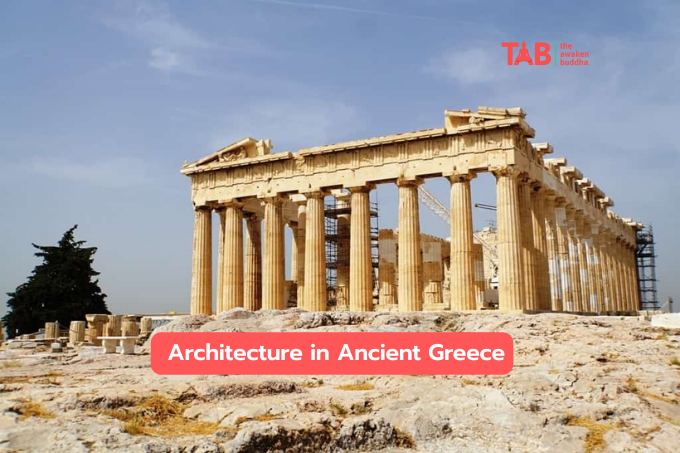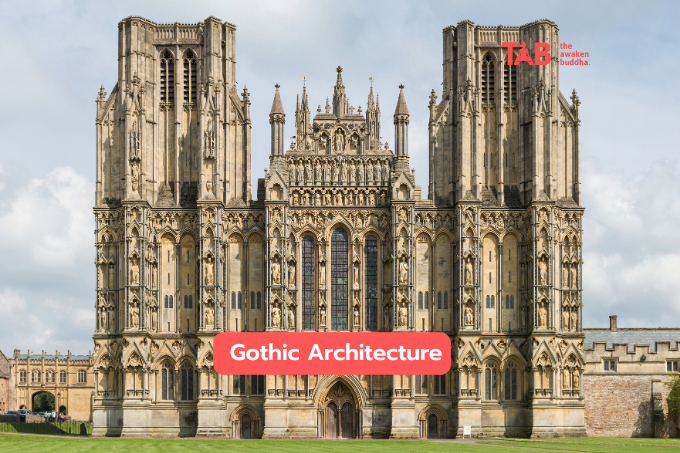Architecture is the skill and science of designing and building structures that meet the needs of the people who use them. Architecture has evolved from ancient Greece to modern skyscrapers, reflecting cultural, technological, and social changes. This article looks at the history of architecture, from the earliest structures to contemporary designs.
Table of Contents
1. Architecture in Ancient Greece
- The Parthenon
- Greek Architecture Characteristics
2. Roman Architecture
- Colosseum
- Roman Architecture Characteristics
3. Gothic Architecture
- Notre-Dame Cathedral
- Gothic Architecture Characteristics
4. Renaissance Architecture
- St. Peter’s Basilica
- Renaissance Architecture Characteristics
5. Baroque Architecture
- Palace of Versailles
- Baroque Architecture Characteristics
6. Neoclassical Architecture
- The White House
- Neoclassical Architecture Characteristics
7. Modern Architecture
- Sydney Opera House
- Modern Architecture Characteristics
8. Skyscrapers
- Burj Khalifa
- Skyscraper Architecture Characteristics
Introduction
Architecture has recreated a vital role in shaping human civilization. From the earliest structures to modern skyscrapers, architecture has evolved to meet the needs of society, reflecting changes in culture, technology, and social norms. The history of architecture is a fascinating journey through time, reflecting the creativity and ingenuity of humankind.
1. Architecture in Ancient Greece

Ancient Greece is renowned for its impressive architecture, which still influences Western architecture. Greek architects were known for using simple, elegant lines and the harmony between the building and its surroundings.
- The Parthenon
The most iconic example of Greek architecture is the Parthenon, built in Athens in the fifth century BCE. The Parthenon was a temple devoted to the goddess Athena and symbolized Athenian power and prestige. The temple’s design incorporated many innovative features, such as columns, pediments, and friezes, all decorated with elaborate carvings.
- Greek Architecture Characteristics
Greek architecture is characterized by its simple, elegant lines and the harmony between the building and its surroundings. Greek architects also used columns and friezes, often adorned with intricate carvings. The Greeks were also skilled at creating beautiful sculptures and reliefs, which were incorporated into the architecture of their buildings.
2. Roman Architecture
Roman architecture was heavily influenced by Greek architecture but incorporated its unique features. Roman architects were known for using concrete, which allowed them to build massive structures like the Colosseum.
- The Colosseum
The Colosseum in Rome is a prime example of Roman architecture. Built in the first century CE, the Colosseum was an arena used for gladiatorial contests and other public spectacles. The Colosseum is famous for its massive size, seating up to 50,000 people, and innovative design, allowing for quick spectators’ entry and exit.
- Roman Architecture Characteristics
Roman architecture is characterized by its use of concrete, which allowed for the construction of massive structures like the Colosseum. Roman architects were also skilled at creating intricate arches, domes, and vaults to support large buildings.
3. Gothic Architecture

Gothic architecture arrived in the 12th century and was characterized by its intricate design and use of light. Gothic architecture is also known for its pointed arches, ribbed vaults, and flying buttresses, which created soaring, light-filled spaces.
- Notre-Dame Cathedral
The Notre Dame Cathedral is an outstanding example of Gothic architecture in Paris, built in the 12th and 13th centuries. Its design features include impressive stained glass windows, intricate stonework, and soaring arches that inspire awe and wonder.
- Gothic Architecture Characteristics
Gothic architecture is distinguished by its intricate design, use of light, pointed arches, ribbed vaults, and flying buttresses. Gothic architects also effectively used stained glass windows, which created colorful, light-filled spaces that inspired awe and wonder.
4. Renaissance Architecture
Renaissance architecture emerged in Italy in the 15th century and was characterized by a renewed interest in classical Greek and Roman architecture. Renaissance architects sought to create beautiful and functional buildings, incorporating symmetry, proportion, and perspective.
- St. Peter’s Basilica
St. Peter’s Basilica is one of the most archetypal examples of Renaissance architecture in Rome. Built-in the 16th century, the basilica features a massive dome, intricate marble floors, and stunning works of art, including Michelangelo’s famous sculpture, the Pietà.
- Renaissance Architecture Characteristics
Renaissance architecture is characterized by using classical elements like symmetry, proportion, and perspective. Renaissance architects also effectively used domes, arches, and columns, often adorned with intricate carvings and sculptures.
5. Baroque Architecture
Baroque architecture emerged in the 17th century, characterized by its ornate, theatrical style. Baroque architects sought to create grand and dramatic buildings, incorporating curves, domes, and ornate decoration.
- Palace of Versailles
One of the most well-known examples of Baroque architecture is the Mansion of Versailles in France. Built-in the 17th century, the palace features intricate decoration, including gilded moldings and elaborate frescoes, and sprawling gardens that are a testament to the grandeur of the French monarchy.
- Baroque Architecture Characteristics
Baroque architecture is characterized by its ornate, theatrical style and grandeur. Baroque architects effectively used curves, domes, and ornate decoration, often incorporating elements like marble, gold leaf, and frescoes.
6. Neoclassical Architecture
Neoclassical architecture appeared in the 18th century and was characterized by a return to classical Greek and Roman architecture. Neoclassical architects sought to create elegant and dignified buildings, incorporating columns, pediments, and domes.
- The White House
One of the most archetypal examples of Neoclassical architecture is the White House in Washington, D.C. Built in the late 18th century, the White House features a massive portico with columns, a symmetrical design, and a dome reminiscent of the classical antique of ancient Greece and Rome.
- Neoclassical Architecture Characteristics
Neoclassical architecture is characterized by its use of classical elements like columns, pediments, and domes. Neoclassical architects sought to create elegant and dignified buildings, often incorporating marble, stone, and elaborate carvings.
7. Modern Architecture
Modern architecture arrived in the late 19th century and was characterized by a departure from traditional styles and a focus on function and simplicity. Modern architects sought to create efficient, sustainable, and visually appealing buildings.
- Opera House
One of the most well-known examples of a creator in architecture is the Sydney Opera House in Australia. Built-in the mid-20th century, the opera house features a distinctive white, sail-shaped shell design that has become an iconic symbol of Australia and modern architecture.
- Modern Architecture Characteristics
Modern architecture is characterized by a departure from traditional styles and a focus on function and simplicity. Modern architects sought to create efficient, sustainable, and visually appealing buildings, often incorporating steel, glass, and concrete elements.
8. Postmodern Architecture
Postmodern architecture appeared in the late 20th century and was characterized by a rejection of the principles of modern architecture. Postmodern architects sought to create more playful, ironic, and visually stimulating buildings, often incorporating elements of past styles and cultural references.
- Walt Disney Concert Hall
One of the most well-known examples of postmodern architecture is the Walt Disney Concert Hall in Los Angeles. Created by architect Frank Gehry, the concert hall features a distinctive, playful, striking, curving design.
- Postmodern Architecture Characteristics
Postmodern architecture is characterized by a rejection of the principles of modern architecture and a focus on playfulness, irony, and cultural references. Postmodern architects often incorporate elements of past styles and cultural references, using various materials and shapes to create visually stimulating buildings.
9. Contemporary Architecture
Contemporary architecture refers to the architecture of the present day and is characterized by a wide range of styles and approaches. Contemporary architects draw inspiration from various sources, including modern and postmodern architectural principles.
- Burj Khalifa
The Burj Khalifa in Dubai is an iconic example of contemporary architecture built in the 21st century. It features a unique and striking tapered design representing modern architectural and engineering principles.
- Contemporary Architecture Characteristics
Contemporary architecture is characterized by various styles and approaches, drawing inspiration from various sources. Contemporary architects often incorporate new materials and technologies to create functional and visually striking buildings.
Conclusion
Architecture has significantly shaped our built environment and cultural identity from the ancient Greeks to today. Each architectural style has its unique characteristics and has contributed to the evolution of architecture as an art form. Whether we are admiring the intricate stonework of a Gothic cathedral or the sleek lines of a contemporary skyscraper, architecture continues to inspire and awe us with its beauty and ingenuity.
FAQs
1. What is the oldest example of architecture?
The oldest known example of architecture is the ancient city of Jericho, which dates back to 8000 BCE.
2. Who is the most famous architect of all time?
Many famous architects throughout history, including Frank Lloyd Wright, Le Corbusier, and I.M. Pei.
3. What is the contrast between modern and postmodern architecture?
A focus on function and simplicity characterizes modern architecture, while postmodern architecture is characterized by a rejection of modern principles and a focus on playfulness and cultural references.
4. What materials are commonly used in contemporary architecture?
Contemporary architects often use various materials, including glass, steel, concrete, and recycled materials.
5. How has technology influenced architecture?
Technology has allowed architects to design and construct once-impossible buildings like skyscrapers and complex, organic shapes. It has also allowed for more efficient and sustainable building practices.






